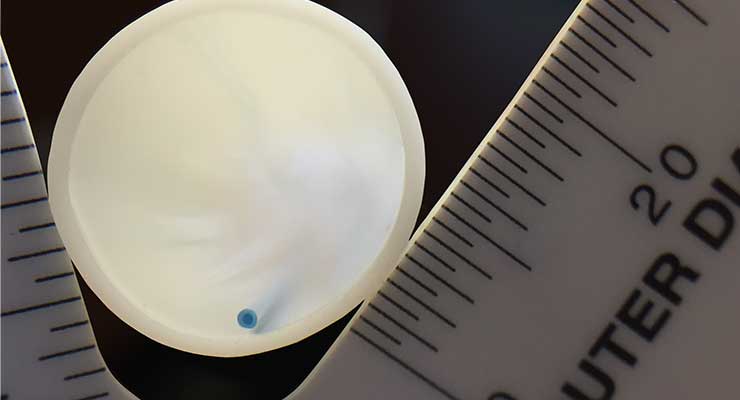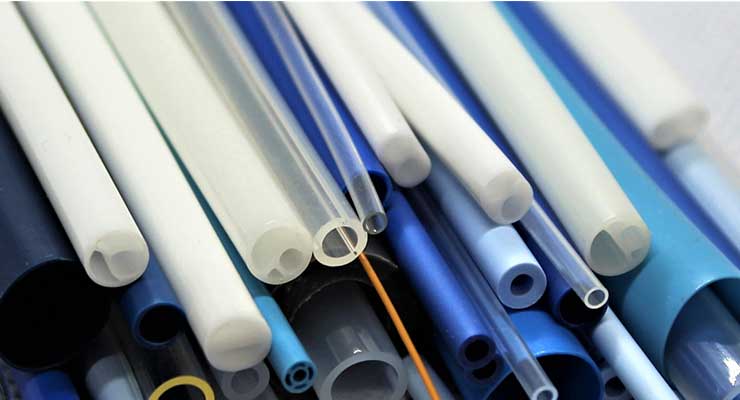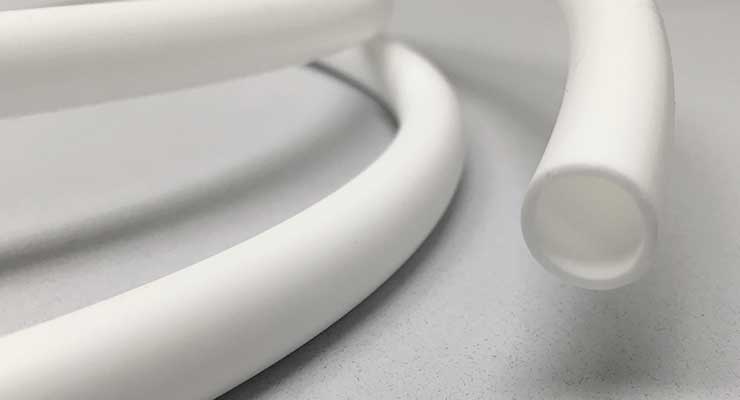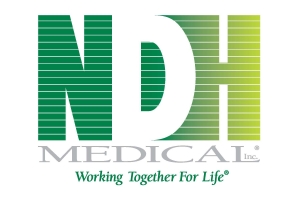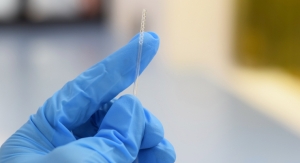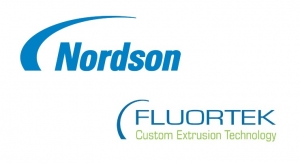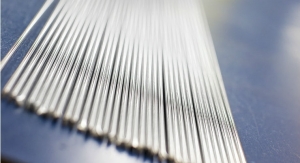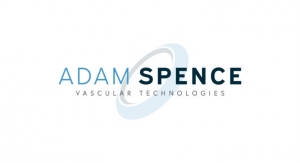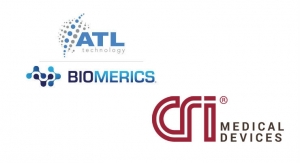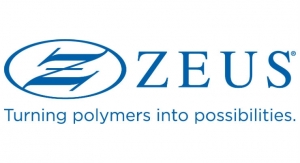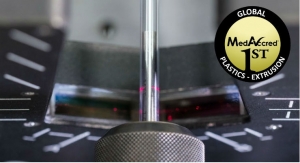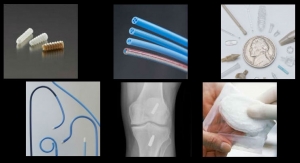Mark Crawford, Contributing Writer10.01.20
Extrusion is a rapidly advancing field in medical device manufacturing. Extruders must keep pace with the increasing complexity of medical devices to provide enhanced, often-customized tubing features and material properties. Equipment manufacturers continue to make advanced machines that can manufacture smaller, more functional tubing with very tight tolerances—for example, interior diameter sizes in the 0.002-inch range, with high precision and multiple properties.
“In today’s market, medical tubing is pushing the boundaries for smaller extrusions, tighter tolerances, and multilayers/multi-materials, along with new materials with a large range of physical strength, flexibility, and durability to accommodate the demands of new products,” said Chad Freestone, director of engineering for Flexan, a Salt Lake City, Utah-based manufacturer of custom silicone and thermoplastic components and sub-assemblies for medical device companies.
COVID-19 is a new driving force behind the increased demand for medical tubing. According to Markets and Markets, the medical tubing industry is expected to grow about 13 percent by 2021, for a total value of $2.9 billion—up from $2.6 billion in 2020.1 Much of this market growth will be related to the growing needs for medical tubes for drug delivery devices, catheters, nasogastric procedures, nebulizers, and bulk disposable tubing.
Some OEMs are producing their own tubing in-house to save money and time. This is an effective approach for basic tubing needs; however, OEMs tend to outsource more challenging projects to their extrusion partners, expecting them to have the knowledge and technical skills to turn these complex designs into reality, within very tight tolerances.
“Over the last five to eight years, many OEMs have acquired their own extrusion houses in the attempt to vertically integrate, and it has generally worked for that OEM,” said Tyler Ware, president of GenX Medical, a Chattanooga, Tenn.-based custom extrusion house specializing in tubing for medical devices. “The flip side is the other customers of the extrusion house now have slower service, longer lead times, higher prices, and a less desirable customer/supplier interaction. This has opened up opportunities for new extrusion houses to get their foot in the door, and typically they stay.”
Even with such a high level of competition, the demand for medical tubing continues to lure new extrusion providers into the field, a number of which have no previous experience with medical tubing. “Some of the highly novel and niche processes are becoming more commonplace, with more companies offering these services,” added Charles Golub, market development manager for Saint-Gobain Medical Components, a Northborough, Mass.-based contract manufacturer focused on customized material solutions from silicone, thermoplastic elastomers [TPEs], and polyvinyl chloride. “Carving out a niche in today’s market is tough, especially without a previously existing footprint.”
Latest Trends
Medical device manufacturers (MDMs) have increasingly complex extrusion needs that require very precise dimensional, material, and design specifications. They sometimes work closely with their extruding partners to develop innovative and/or custom extrusion solutions, such as transition tubes in which one material transitions to another over the length of the tube, exhibiting different mechanical properties at specific points along the tube. This type of complex extrusion requires deep technical experience and an innovative approach.
“From our perspective, extrusion in the medical industry falls into two major categories—easy and not easy,” said Ware. “Most OEMs make the easy tubing themselves in their acquired extrusion houses and then outsource their more difficult jobs. These include very small tubing, sticky tubing, and large tubing.”
In general, depending on the project and the materials, interior diameters for tubing can be 0.005 inches or smaller, with wall thicknesses as small as 0.001 inches and tolerances in the ±0.00025-inch to ±0.0005-inch range. Large tubing can range up to an interior diameter of 1.5 inches or greater.
“One of the hottest trends we are seeing in extruding products for the medical device industry is the continuous evolution of size reduction [finer wire gauges and extrusion thicknesses], along with the advent of new compounds able to meet these smaller profiles, while still meeting the latest stringent environmental and biocompatibility requirements,” said Mike Haff, engineering manager for BAYCABLE, a Fremont, Calif.-based designer and manufacturer of custom cable and cable assemblies for a variety of companies, including medical device manufacturing firms.
Silicone continues to be one of the most popular materials for tubing. Markets and Markets projects the silicone tubing segment is estimated to have the highest market share through 2021.1 Silicone is preferred for drug-eluting applications because of its versatility and high dielectric strength. Silicone elastomers offer excellent dimensional stability; their strength and flexibility are ideal for thin-walled tubing. Other attributes include temperature resistance, water resistance, and durability. Silicone can also be manufactured with different levels of hardness and in customized colors.
However, material shortages and sterilization facility closures have created supply disruptions for silicone. The FDA has warned MDMs about potential slowdowns in the production of certain devices due to reduced supplies of siloxane—a key ingredient in silicone—and the closure of multiple ethylene oxide sterilization facilities. Such constraints have resulted in higher prices, longer lead times, and production delays, which are making some MDMs consider silicone alternatives such as thermoplastic elastomers.
“Silicone shortages and long lead times for silicone and TPE tubing are still an issue, thanks to COVID-19 disruptions,” said Marcia Coulson, president of Eldon James Corporation, a Denver, Colo.-based manufacturer of proprietary and customized tubing and connection solutions for medical devices, life sciences, and pharmaceuticals. “OEMs are searching for alternative materials. For example, our Flexelene 135C is an effective TPE alternative to silicone and meets regulatory standards for bioprocess and biological manufacturing. It also exhibits low extractables, low protein binding, and low gas permeability characteristics, making it suitable for use in peristaltic pump and medical device applications.”
Another silicone alternative is PolyOne’s medical grade Versaflex HC BT218, a TPE-formulated material suitable for biopharmaceutical tubing applications. Characteristics include weldability, kink resistance, and tensile strength performance comparable to leading medical tubing materials, including silicone and TPEs.
Over the years, fluoropolymers have been considered the go-to material for low coefficients of friction (CoF). However, more MDMs are asking their contract manufacturers for softer material options that still maintain a low CoF. To meet these requests, Saint-Gobain formulated a soft TPE called Tygon LCF, with CoF properties comparable to polytetrafluoroethylene (PTFE), while still offering high elasticity and elongation. “This enables it to be used in products that previously had a strong requirement for low CoF, but where fluoropolymers would make the final construction too rigid, or create bonding issues in multilayer constructions,” said Golub.
As Industry 4.0 and Internet of Things (IoT) gain traction, data is increasingly in high demand. From up-front product development to control charts and quality assurance data, OEMs want the supporting data. “OEMs are relying more heavily on contract manufacturers to coordinate and facilitate testing, whether it is done in-house or at external labs, during the development phases,” said Golub. “Throughout the supply chain, OEMs want data on how the processes are performing. Without proper systems in place to produce, record, and store all this data, managing simple requests for data can become a burden. This is why it is critical suppliers evolve technologically from both their internal processes to their development processes, looking closely at how they handle their data flow.”
What OEMs Want
OEMs are pushing for greater functionality at less cost. This includes improved performance from materials, higher-pressure tubes, and more complex multi-lumen applications.
For example, OEMs “are looking for durability and longer run life in pump tubing, thereby allowing medical devices to increase performance in surgery settings,” said Coulson.
Other demands include very tight tolerances and highly concentric, narrow elongation range balloon tubing. Shorter lead times are always expected, especially for quick turnaround in the development phase (often with multi-lumens). In fact, even if OEMs have the in-house capability to do this work, they often outsource it because it is faster through a contract manufacturer.
And, of course, all OEMs insist on quality. OEMs want their extruders to consistently meet tight dimensional specifications such as tubing outer diameters (OD), inner diameter (ID), wall, concentricity, and ovality, plus provide all the supportive documentation. With increasing regulatory demands, process validations are a must, including qualification data and testing and medical and pharmaceutical certification testing. In order to provide the inspection data required to certify their customers’ products, extruders must invest in advanced online gauging systems and upgraded software.
With the huge emphasis on time to market, OEMs are leaning on their extruders to provide more value-added secondary processes such as tipping, overmolding, bonding, drilling/skiving, printing, coating, braiding, and reflow. Extruders that can provide some or all of these additional services, under one roof, will have plenty of business. With COVID-19 supply chain impacts, companies are also more interested in using established product lines and off-the-shelf solutions, to speed up manufacturing and time to market.
New Technology Advancements
The latest extruders are equipped with closed-loop programs that integrate with downstream equipment and laser measurement systems. This makes the extruder intelligent enough to change speeds when needed to maintain the product dimensions. “New extruders typically have human machine interface [HMI] control units, in addition to programmable logic controllers (PLCs), that can digitally control multiple variables on the machine simultaneously,” said Christian Herrild, director of growth strategies at Teel Plastics, a Baraboo, Wis.-based provider of customized tubing for the medical device industry.2 “They are generally capable of network connectivity and can send and receive data with proper IT integration.”
Maintaining tubing quality and consistency with such tight tolerance requirements necessitates advanced inspection systems. As tubing and wall thickness requirements continue to get smaller, quality systems and measurement technologies must also keep pace, such as X-ray OD/wall measuring/control systems or camera vision systems that are used in-line and have 360-degree surface defect detection capabilities.
BAYCABLE recently acquired high-tech digital inspection equipment (Keyence, Model VHF-950F) that allows quality-control personnel to make detailed cross-sectional analyses of extrusion profiles within seconds. “An extrusion cross-sectional slice is placed on a microscope platen and a detailed inspection report is automatically generated, including minimum, maximum, and average wall thicknesses, in seconds,” said Haff. “These reports are saved to our server as quality records for future review or reporting.”
Industry 4.0 and IoT are essential for advancing today’s extrusion technology, especially with the need to meet OEM requirements for tight tolerances. Even the tiniest fluctuations in machine operation can put tubing out of tolerance—a risk that is minimized or even eliminated with automation. These and other technologies can be used individually, or combined, to create new technological/production extrusion breakthroughs—either by equipment manufacturers or contract manufacturers that develop their own in-house proprietary tools and equipment.
“There are so many factors that lead to variation in your process that dissecting it, step by step, and looking at what enables smaller sizes, with tighter tolerances, is commonplace nowadays,” said Golub.
“Everything from resonance in your cooling bath to understanding the drive in your puller to having a balanced die with optimal draw down ratios for the specific material you’re running must be reviewed as part of the process design of experiments. Many of these can now be modeled much more easily, which saves time and money. For many of our TPEs, the smallest ID we’ve produced is 0.004 inches. Tolerances vary a lot by the size of the tubing, but for small tubing sizes we can be around ±0.001 inches.”
There is also strong demand for material solutions that offer application-specific performance, such as for peristaltic pumps. Positive displacement pumps have a key role in medical devices, since they minimize the amount of air that can enter the bloodstream; many of these pumps require specialty formulated tubing materials to meet their performance specs. Each pump has different design features, such as percent occlusion (the amount the tube is over-compressed), or the amount of torque the pump drive exhibits, which means each tube may respond differently. In addition, product requirements may differ; for example, flow rate stability is critical for infusion pumps but not as critical for extracorporeal membrane oxygenation (ECMO) or dialysis pumps, where longer tubing life is the key attribute. “Our portfolio of pump products such as Tygon S-97E and Sanipure BDF serve many of these applications and have seen increased demand due to COVID-19,” said Golub.
Saint-Gobain has embraced Industry 4.0 to improve its quality management systems. “By putting the correct systems in place, we are able to have the data we need for our customers, when we need it,” said Golub. “Most commonly this is quality data for specific runs or processes. Integrating packages of our enterprise resource planning [ERP] with our process equipment through smart sensors helps to automate the inspection process and ensure we are producing quality parts at Six Sigma or above levels.”
BAYCABLE is in the process of deploying a new ERP system that provides the ability to monitor and record, in real time, production parameters during extrusion operations with PLCs attached to the extruder. “The PLCs monitor pressure and temperature profiles at strategic locations on the equipment,” said Haff. “This implementation will further improve throughput and quality.”
So far, additive manufacturing (AM) has had far less impact on extrusion compared to other production processes, being used mostly to make parts and tools for equipment. For example, BAYCABLE uses both deposition and stereolithography [SLA]-type 3D printers to produce fixturing and to support production. The company is now going a step further and evaluating metal printing options as a method for producing the tooling needed to perform an extrusion, or an injection molding operation. “Currently our in-house machine shop produces tooling for production,” said Haff. “However, giving the engineering department the capability to design and print its own tooling, unsupervised, especially overnight, is an attractive consideration.”
“As the laser sintering process becomes more robust, we’ll see more and more usage of this technology for fast turnaround extrusion requests, especially for complex parts such as multi-lumen geometries,” added Golub. “Previously, machining highly complex, multi-lumen tooling required a very skilled machinist, with a large potential for trial and error. With advances in metal additive manufacturing, we can run a process model and have the die from that model printed in a couple of hours. Then, with a little polishing, we’re ready to make challenging parts in very short turnaround time.”
Another key element of Industry 4.0 is software. Computer-aided engineering (CAE) modeling has made huge improvements over the last 10 years, making it much easier to use and understand. It can be integrated with other IoT technologies to streamline engineering analysis tasks such as finite element analysis (FEA), computational fluid dynamics (CFD), multibody dynamics (MBD), durability, and optimization.
“Today, most students out of a reputable engineering school know how to create and run a model on an extrusion die,” said Golub. “This makes it much more efficient to design a process and removes a lot of the troubleshooting once the process is up and running. It also reduces tool re-cuts that would normally occur. As these models become more user friendly and the skills required to run them become more widespread, it becomes more of a necessity for companies to include them in their development tools.”
Moving Forward
Compliance and regulatory requirements continue to evolve. Prepping for the shift to the EU’s Medical Device Regulation [MDR] in 2021, as well as changes to the EU’s Registration, Evaluation, Authorization, and Restriction of Chemicals (REACH) Regulation “substance of very high concern” [SVHC] lists, continue to challenge companies selling their devices in Europe. Non-compliant chemicals are often added to the restricted lists of these and other regulatory bodies, so continuous monitoring and reporting is required. Many of the requirements for compliance will require supporting documentation and testing data from component contract manufacturers, which were not previously required. Staying on top of these changing requirements typically requires a dedicated quality and regulatory team that interacts with the OEM team to streamline the submission process.
Supply chain security is also a critical concern, as shown by the staggering disruptions created by the COVID-19 pandemic. The risks of depending on one or two regions for parts or materials are making companies think again about reshoring to the U.S., or nearshoring to Mexico, from low-cost countries. For example, Eldon James works with customers to find material options that can compete with traditional materials manufactured offshore and offer as much flexibility as possible. “Our experts can help engineer a cost-competitive solution that can compete with offshore manufacturing,” said Coulson.
Extrusion breakthroughs, especially as technologies and materials become more advanced and specialized, increasingly require cross-disciplinary collaboration among OEM and contract manufacturer teams—bringing deep knowledge to bear on challenging device designs that push the limits of extrusion science.
“It is when OEMs bring their problem statement to manufacturers that we see true innovation happen,” said Golub. “If they only bring their solution, the manufacturer doesn’t see the full problem and may not be able to provide truly novel solutions. Just because a supplier doesn’t have a product in their portfolio that immediately solves the OEM’s problem does not mean they have not evaluated a similar issue in the past. This is why investing in R&D to look into exploratory areas can help to build a strong foundation of technical expertise and solutions for years to come, even if the results aren’t immediate products.”
References
Mark Crawford is a full-time freelance business and marketing/communications writer based in Madison, Wis. His clients range from startups to global manufacturing leaders. He also writes a variety of feature articles for regional and national publications and is the author of five books.
“In today’s market, medical tubing is pushing the boundaries for smaller extrusions, tighter tolerances, and multilayers/multi-materials, along with new materials with a large range of physical strength, flexibility, and durability to accommodate the demands of new products,” said Chad Freestone, director of engineering for Flexan, a Salt Lake City, Utah-based manufacturer of custom silicone and thermoplastic components and sub-assemblies for medical device companies.
COVID-19 is a new driving force behind the increased demand for medical tubing. According to Markets and Markets, the medical tubing industry is expected to grow about 13 percent by 2021, for a total value of $2.9 billion—up from $2.6 billion in 2020.1 Much of this market growth will be related to the growing needs for medical tubes for drug delivery devices, catheters, nasogastric procedures, nebulizers, and bulk disposable tubing.
Some OEMs are producing their own tubing in-house to save money and time. This is an effective approach for basic tubing needs; however, OEMs tend to outsource more challenging projects to their extrusion partners, expecting them to have the knowledge and technical skills to turn these complex designs into reality, within very tight tolerances.
“Over the last five to eight years, many OEMs have acquired their own extrusion houses in the attempt to vertically integrate, and it has generally worked for that OEM,” said Tyler Ware, president of GenX Medical, a Chattanooga, Tenn.-based custom extrusion house specializing in tubing for medical devices. “The flip side is the other customers of the extrusion house now have slower service, longer lead times, higher prices, and a less desirable customer/supplier interaction. This has opened up opportunities for new extrusion houses to get their foot in the door, and typically they stay.”
Even with such a high level of competition, the demand for medical tubing continues to lure new extrusion providers into the field, a number of which have no previous experience with medical tubing. “Some of the highly novel and niche processes are becoming more commonplace, with more companies offering these services,” added Charles Golub, market development manager for Saint-Gobain Medical Components, a Northborough, Mass.-based contract manufacturer focused on customized material solutions from silicone, thermoplastic elastomers [TPEs], and polyvinyl chloride. “Carving out a niche in today’s market is tough, especially without a previously existing footprint.”
Latest Trends
Medical device manufacturers (MDMs) have increasingly complex extrusion needs that require very precise dimensional, material, and design specifications. They sometimes work closely with their extruding partners to develop innovative and/or custom extrusion solutions, such as transition tubes in which one material transitions to another over the length of the tube, exhibiting different mechanical properties at specific points along the tube. This type of complex extrusion requires deep technical experience and an innovative approach.
“From our perspective, extrusion in the medical industry falls into two major categories—easy and not easy,” said Ware. “Most OEMs make the easy tubing themselves in their acquired extrusion houses and then outsource their more difficult jobs. These include very small tubing, sticky tubing, and large tubing.”
In general, depending on the project and the materials, interior diameters for tubing can be 0.005 inches or smaller, with wall thicknesses as small as 0.001 inches and tolerances in the ±0.00025-inch to ±0.0005-inch range. Large tubing can range up to an interior diameter of 1.5 inches or greater.
“One of the hottest trends we are seeing in extruding products for the medical device industry is the continuous evolution of size reduction [finer wire gauges and extrusion thicknesses], along with the advent of new compounds able to meet these smaller profiles, while still meeting the latest stringent environmental and biocompatibility requirements,” said Mike Haff, engineering manager for BAYCABLE, a Fremont, Calif.-based designer and manufacturer of custom cable and cable assemblies for a variety of companies, including medical device manufacturing firms.
Silicone continues to be one of the most popular materials for tubing. Markets and Markets projects the silicone tubing segment is estimated to have the highest market share through 2021.1 Silicone is preferred for drug-eluting applications because of its versatility and high dielectric strength. Silicone elastomers offer excellent dimensional stability; their strength and flexibility are ideal for thin-walled tubing. Other attributes include temperature resistance, water resistance, and durability. Silicone can also be manufactured with different levels of hardness and in customized colors.
However, material shortages and sterilization facility closures have created supply disruptions for silicone. The FDA has warned MDMs about potential slowdowns in the production of certain devices due to reduced supplies of siloxane—a key ingredient in silicone—and the closure of multiple ethylene oxide sterilization facilities. Such constraints have resulted in higher prices, longer lead times, and production delays, which are making some MDMs consider silicone alternatives such as thermoplastic elastomers.
“Silicone shortages and long lead times for silicone and TPE tubing are still an issue, thanks to COVID-19 disruptions,” said Marcia Coulson, president of Eldon James Corporation, a Denver, Colo.-based manufacturer of proprietary and customized tubing and connection solutions for medical devices, life sciences, and pharmaceuticals. “OEMs are searching for alternative materials. For example, our Flexelene 135C is an effective TPE alternative to silicone and meets regulatory standards for bioprocess and biological manufacturing. It also exhibits low extractables, low protein binding, and low gas permeability characteristics, making it suitable for use in peristaltic pump and medical device applications.”
Another silicone alternative is PolyOne’s medical grade Versaflex HC BT218, a TPE-formulated material suitable for biopharmaceutical tubing applications. Characteristics include weldability, kink resistance, and tensile strength performance comparable to leading medical tubing materials, including silicone and TPEs.
Over the years, fluoropolymers have been considered the go-to material for low coefficients of friction (CoF). However, more MDMs are asking their contract manufacturers for softer material options that still maintain a low CoF. To meet these requests, Saint-Gobain formulated a soft TPE called Tygon LCF, with CoF properties comparable to polytetrafluoroethylene (PTFE), while still offering high elasticity and elongation. “This enables it to be used in products that previously had a strong requirement for low CoF, but where fluoropolymers would make the final construction too rigid, or create bonding issues in multilayer constructions,” said Golub.
As Industry 4.0 and Internet of Things (IoT) gain traction, data is increasingly in high demand. From up-front product development to control charts and quality assurance data, OEMs want the supporting data. “OEMs are relying more heavily on contract manufacturers to coordinate and facilitate testing, whether it is done in-house or at external labs, during the development phases,” said Golub. “Throughout the supply chain, OEMs want data on how the processes are performing. Without proper systems in place to produce, record, and store all this data, managing simple requests for data can become a burden. This is why it is critical suppliers evolve technologically from both their internal processes to their development processes, looking closely at how they handle their data flow.”
What OEMs Want
OEMs are pushing for greater functionality at less cost. This includes improved performance from materials, higher-pressure tubes, and more complex multi-lumen applications.
For example, OEMs “are looking for durability and longer run life in pump tubing, thereby allowing medical devices to increase performance in surgery settings,” said Coulson.
Other demands include very tight tolerances and highly concentric, narrow elongation range balloon tubing. Shorter lead times are always expected, especially for quick turnaround in the development phase (often with multi-lumens). In fact, even if OEMs have the in-house capability to do this work, they often outsource it because it is faster through a contract manufacturer.
And, of course, all OEMs insist on quality. OEMs want their extruders to consistently meet tight dimensional specifications such as tubing outer diameters (OD), inner diameter (ID), wall, concentricity, and ovality, plus provide all the supportive documentation. With increasing regulatory demands, process validations are a must, including qualification data and testing and medical and pharmaceutical certification testing. In order to provide the inspection data required to certify their customers’ products, extruders must invest in advanced online gauging systems and upgraded software.
With the huge emphasis on time to market, OEMs are leaning on their extruders to provide more value-added secondary processes such as tipping, overmolding, bonding, drilling/skiving, printing, coating, braiding, and reflow. Extruders that can provide some or all of these additional services, under one roof, will have plenty of business. With COVID-19 supply chain impacts, companies are also more interested in using established product lines and off-the-shelf solutions, to speed up manufacturing and time to market.
New Technology Advancements
The latest extruders are equipped with closed-loop programs that integrate with downstream equipment and laser measurement systems. This makes the extruder intelligent enough to change speeds when needed to maintain the product dimensions. “New extruders typically have human machine interface [HMI] control units, in addition to programmable logic controllers (PLCs), that can digitally control multiple variables on the machine simultaneously,” said Christian Herrild, director of growth strategies at Teel Plastics, a Baraboo, Wis.-based provider of customized tubing for the medical device industry.2 “They are generally capable of network connectivity and can send and receive data with proper IT integration.”
Maintaining tubing quality and consistency with such tight tolerance requirements necessitates advanced inspection systems. As tubing and wall thickness requirements continue to get smaller, quality systems and measurement technologies must also keep pace, such as X-ray OD/wall measuring/control systems or camera vision systems that are used in-line and have 360-degree surface defect detection capabilities.
BAYCABLE recently acquired high-tech digital inspection equipment (Keyence, Model VHF-950F) that allows quality-control personnel to make detailed cross-sectional analyses of extrusion profiles within seconds. “An extrusion cross-sectional slice is placed on a microscope platen and a detailed inspection report is automatically generated, including minimum, maximum, and average wall thicknesses, in seconds,” said Haff. “These reports are saved to our server as quality records for future review or reporting.”
Industry 4.0 and IoT are essential for advancing today’s extrusion technology, especially with the need to meet OEM requirements for tight tolerances. Even the tiniest fluctuations in machine operation can put tubing out of tolerance—a risk that is minimized or even eliminated with automation. These and other technologies can be used individually, or combined, to create new technological/production extrusion breakthroughs—either by equipment manufacturers or contract manufacturers that develop their own in-house proprietary tools and equipment.
“There are so many factors that lead to variation in your process that dissecting it, step by step, and looking at what enables smaller sizes, with tighter tolerances, is commonplace nowadays,” said Golub.
“Everything from resonance in your cooling bath to understanding the drive in your puller to having a balanced die with optimal draw down ratios for the specific material you’re running must be reviewed as part of the process design of experiments. Many of these can now be modeled much more easily, which saves time and money. For many of our TPEs, the smallest ID we’ve produced is 0.004 inches. Tolerances vary a lot by the size of the tubing, but for small tubing sizes we can be around ±0.001 inches.”
There is also strong demand for material solutions that offer application-specific performance, such as for peristaltic pumps. Positive displacement pumps have a key role in medical devices, since they minimize the amount of air that can enter the bloodstream; many of these pumps require specialty formulated tubing materials to meet their performance specs. Each pump has different design features, such as percent occlusion (the amount the tube is over-compressed), or the amount of torque the pump drive exhibits, which means each tube may respond differently. In addition, product requirements may differ; for example, flow rate stability is critical for infusion pumps but not as critical for extracorporeal membrane oxygenation (ECMO) or dialysis pumps, where longer tubing life is the key attribute. “Our portfolio of pump products such as Tygon S-97E and Sanipure BDF serve many of these applications and have seen increased demand due to COVID-19,” said Golub.
Saint-Gobain has embraced Industry 4.0 to improve its quality management systems. “By putting the correct systems in place, we are able to have the data we need for our customers, when we need it,” said Golub. “Most commonly this is quality data for specific runs or processes. Integrating packages of our enterprise resource planning [ERP] with our process equipment through smart sensors helps to automate the inspection process and ensure we are producing quality parts at Six Sigma or above levels.”
BAYCABLE is in the process of deploying a new ERP system that provides the ability to monitor and record, in real time, production parameters during extrusion operations with PLCs attached to the extruder. “The PLCs monitor pressure and temperature profiles at strategic locations on the equipment,” said Haff. “This implementation will further improve throughput and quality.”
So far, additive manufacturing (AM) has had far less impact on extrusion compared to other production processes, being used mostly to make parts and tools for equipment. For example, BAYCABLE uses both deposition and stereolithography [SLA]-type 3D printers to produce fixturing and to support production. The company is now going a step further and evaluating metal printing options as a method for producing the tooling needed to perform an extrusion, or an injection molding operation. “Currently our in-house machine shop produces tooling for production,” said Haff. “However, giving the engineering department the capability to design and print its own tooling, unsupervised, especially overnight, is an attractive consideration.”
“As the laser sintering process becomes more robust, we’ll see more and more usage of this technology for fast turnaround extrusion requests, especially for complex parts such as multi-lumen geometries,” added Golub. “Previously, machining highly complex, multi-lumen tooling required a very skilled machinist, with a large potential for trial and error. With advances in metal additive manufacturing, we can run a process model and have the die from that model printed in a couple of hours. Then, with a little polishing, we’re ready to make challenging parts in very short turnaround time.”
Another key element of Industry 4.0 is software. Computer-aided engineering (CAE) modeling has made huge improvements over the last 10 years, making it much easier to use and understand. It can be integrated with other IoT technologies to streamline engineering analysis tasks such as finite element analysis (FEA), computational fluid dynamics (CFD), multibody dynamics (MBD), durability, and optimization.
“Today, most students out of a reputable engineering school know how to create and run a model on an extrusion die,” said Golub. “This makes it much more efficient to design a process and removes a lot of the troubleshooting once the process is up and running. It also reduces tool re-cuts that would normally occur. As these models become more user friendly and the skills required to run them become more widespread, it becomes more of a necessity for companies to include them in their development tools.”
Moving Forward
Compliance and regulatory requirements continue to evolve. Prepping for the shift to the EU’s Medical Device Regulation [MDR] in 2021, as well as changes to the EU’s Registration, Evaluation, Authorization, and Restriction of Chemicals (REACH) Regulation “substance of very high concern” [SVHC] lists, continue to challenge companies selling their devices in Europe. Non-compliant chemicals are often added to the restricted lists of these and other regulatory bodies, so continuous monitoring and reporting is required. Many of the requirements for compliance will require supporting documentation and testing data from component contract manufacturers, which were not previously required. Staying on top of these changing requirements typically requires a dedicated quality and regulatory team that interacts with the OEM team to streamline the submission process.
Supply chain security is also a critical concern, as shown by the staggering disruptions created by the COVID-19 pandemic. The risks of depending on one or two regions for parts or materials are making companies think again about reshoring to the U.S., or nearshoring to Mexico, from low-cost countries. For example, Eldon James works with customers to find material options that can compete with traditional materials manufactured offshore and offer as much flexibility as possible. “Our experts can help engineer a cost-competitive solution that can compete with offshore manufacturing,” said Coulson.
Extrusion breakthroughs, especially as technologies and materials become more advanced and specialized, increasingly require cross-disciplinary collaboration among OEM and contract manufacturer teams—bringing deep knowledge to bear on challenging device designs that push the limits of extrusion science.
“It is when OEMs bring their problem statement to manufacturers that we see true innovation happen,” said Golub. “If they only bring their solution, the manufacturer doesn’t see the full problem and may not be able to provide truly novel solutions. Just because a supplier doesn’t have a product in their portfolio that immediately solves the OEM’s problem does not mean they have not evaluated a similar issue in the past. This is why investing in R&D to look into exploratory areas can help to build a strong foundation of technical expertise and solutions for years to come, even if the results aren’t immediate products.”
References
Mark Crawford is a full-time freelance business and marketing/communications writer based in Madison, Wis. His clients range from startups to global manufacturing leaders. He also writes a variety of feature articles for regional and national publications and is the author of five books.

